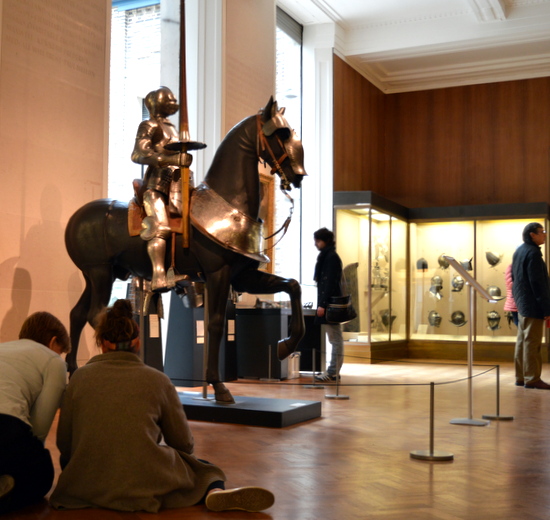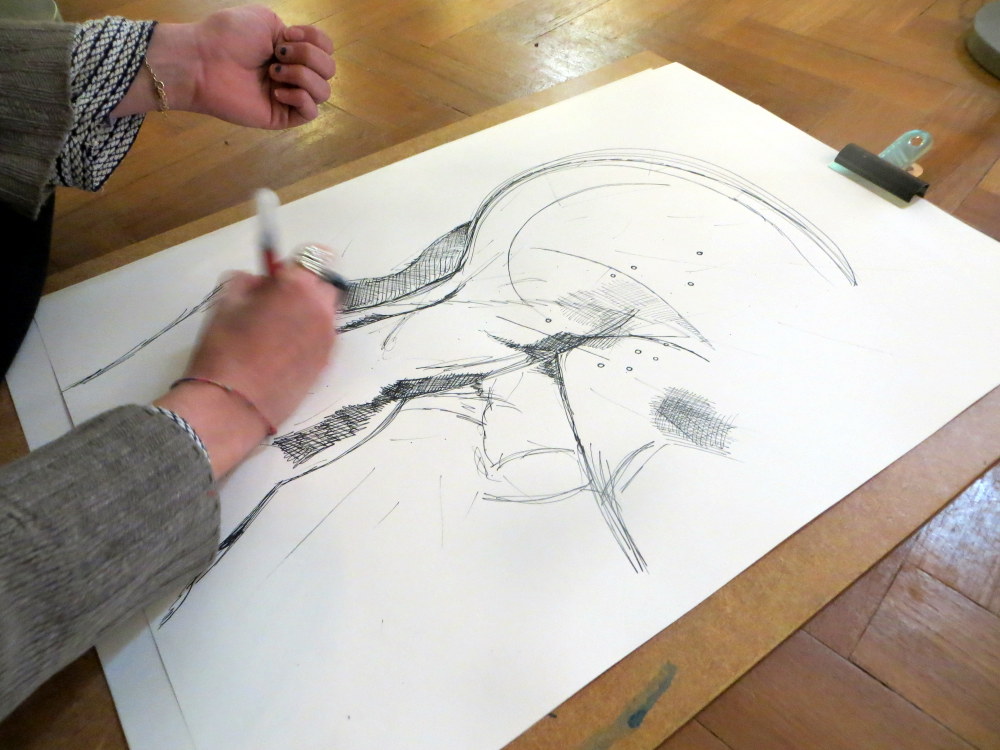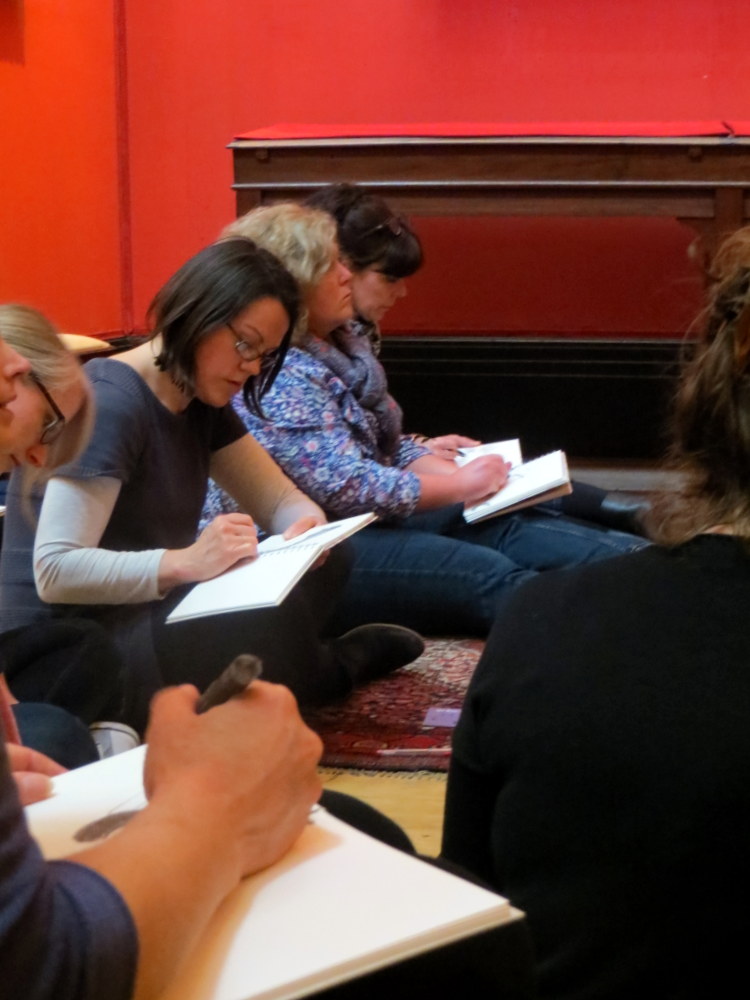Thoughtful Drawing and Mark Making in the Armoury at the Fitzwilliam Museum, Cambridge
This post shares how Paula Briggs and Sheila Ceccarelli from AccessArt and Kate Noble from the Fitzwilliam Museum, Cambridge, enabled teachers to explore armour through discussion, drawing and mark making.

Introduction by Kate Noble
Looking closely at the design and function of armour can feed many different areas of the curriculum. We looked at how a suit of armour is made and talked about how it provided protection from impact weapons such as axes, daggers and swords.

Armourers took inspiration from armoured beasts in the natural world, such as the pangolin, woodlice or beetle and so we talked about similarities between their protective surfaces and shapes. A suit of armour is cleverly jointed with overlapping sheets of metal to allow the soldier to move and would have been made to measure.

There are lots of opportunities here to talk about science, technology and also mathematics.
Find out more about armour in our Fact Sheet for Teachers.



Thoughtful Drawing Exercise
We began the session with a practical drawing exercise designed to help teachers focus upon the physical and in this case tactile qualities of the exhibits through close observation. The aim was to use pencil or pencil as a tool to help teachers see, and to begin to generate a body of work which could inform future exploration back in the studio. In this example teachers worked on large (A3 and bigger) sheets of paper, but the exercise would work equally well in a sketchbook.

The exercise works very well with all ages from 5 upwards. The drawings produced are rich in mark making and as a viewer, you can see how the artist looked closely at each object in order to make the drawings.
We invited the teachers to choose an object in the collection, and to make sure they were close to that object and able to see it clearly. We asked them to spend a moment or two just looking at the object, letting their eye travel around the object, without drawing it.
Using handwriting pens, we told the teachers they were going to make a single drawing using a variety of marks to help explore and describe that object. To help them with this, we made a series of small cards made from torn rectangles before the session. On each piece of card was a type of mark, for example on one card were a series of dashes, an another dots, on another dotted lines, on another thick, controlled lines, on another cross hatching.

When the teachers were ready to start drawing, we held up one card so that everyone could see the mark on it, and asked the teachers to think about where on their drawing they might use that type of mark. Teachers were given just a couple of minutes to use each mark, before another card was held up. The exercise might take 10 to 15 minutes in total, depending upon how many mark making cards you show.



Many thanks to the teachers who participated in this InSET training session for sharing their process with AccessArt and the Fitzwilliam Museum, Cambridge.
Photographs by Paula Briggs, Sheila Ceccarelli and Kate Noble.
UK Charity AccessArt created this resource in collaboration with the Fitzwilliam Museum, Cambridge.
AccessArt has over 850 resources to help develop and inspire your creative thinking, practice and teaching.
AccessArt welcomes artists, educators, teachers and parents both in the UK and overseas.
We believe everyone has the right to be creative and by working together and sharing ideas we can enable everyone to reach their creative potential.









